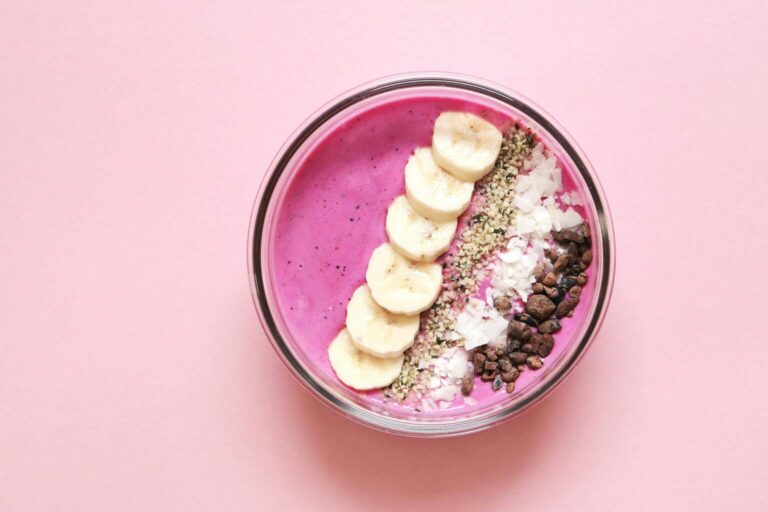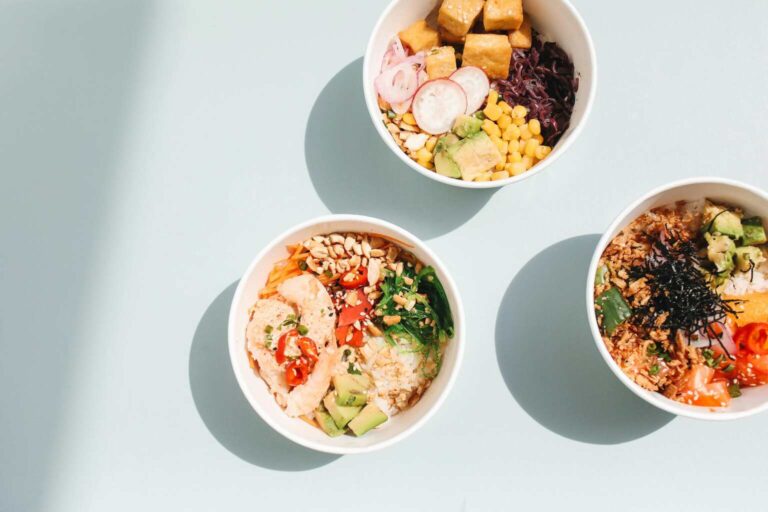Migraine is far and away the most common and disabling type of primary headache disorder, and it comes with a constellation of symptoms beyond the headache pain that impact daily activities and affect the ability to do the things people love most. We know that it’s caused by changes in the body and brain chemistry, and we know that genetics accounts for about half of all migraines. But, some of migraine symptoms get worse because of our daily habits, like what we eat, and also there are certain foods that trigger migraines more than others.
Most people say, “It’s just in your head. It’s just a migraine. It’s just a headache.” But it’s not. It’s something that affects someone and their family. Let’s understand what those foods are that trigger migraines and how you can avoid them, and more.
Can Certain Foods Trigger Migraines?
Yes, food can trigger migraine, but not in the way most people think. Foods don’t cause migraines; they trigger them. That’s an important difference. Your body has to be a bit sensitive or stressed for a food to trigger a migraine.
Most of the time, it’s your brain feeling overworked or irritated. So even though chocolate or wine might set off a migraine, they’re not the real cause. They just make things worse when your body is already having a hard time.
10 Foods That Commonly Trigger Migraines
So if you’re trying to figure out how to reduce those unexpected headaches, foods that trigger migraines might help you spot the culprits. Here are some of them –
1. Coffee
Many of us can’t even imagine starting our day without. But the truth is that too much caffeine can make your migraine symptoms worse. And funny enough, cutting it out suddenly can also trigger a migraine. Yes, both too much and too little coffee can mess with your head.
Remember, not all caffeine is bad news. According to the American Migraine Foundation, when taken in small amounts, caffeine can actually help reduce migraine pain. So, balancing is important. If you love your daily coffee, don’t stress too much, just maybe skip the third cup.
2. Alcohol
If you’ve ever had a rough morning after a few too many drinks, you know what I’m talking about. As per a 2018 study, about 35% of people with migraines said that alcohol made their headaches worse. And out of those, 77% of people pointed to red wine as the biggest trigger.
Alcohol can bring on a migraine in as little as three hours after drinking. Why? Because alcohol dehydrates your body, and dehydration is a well-known trigger for headaches. Also, drinks such as red wine contain histamine, a substance that can easily bother people who often get migraines. So next time you grab a drink, just take a second to think about what’s in it. It might save you from a bad headache later.
3. Processed meat
Hot dogs, sausages, bacon – they might taste great but they could be bad news for your head. Around 5% of migraine sufferers say they’ve felt the signs start soon after eating processed meats.
Why? Because these meats often contain preservatives called nitrites. They’re used to keep the meat fresh and boost flavor, but they can also mess with people who are sensitive. On the other hand, processed meats may have histamines, the same thing that’s found in red wine. That can trigger headaches too, especially if you’re already sensitive to them. So, next time, think twice before going for that cured meat sandwich.
4. Aged cheese
Aged cheeses such as blue cheese, feta, and parmesan might not be your good friends. Studies say around 9 to 10% of people with migraines react to aged cheeses.
It contains tyramine, which forms in food as it gets older. This happens because tiny bacteria slowly break down the food as it gets older. The longer the cheese sits, the more tyramine it collects. This can quietly cause migraines for some people. Wine, chocolate, processed meat, and yeast extract are also included.
5. Chocolate
If you’re a chocolate lover like me, this one hurts. But yes, chocolate can be one of the biggest reasons behind migraines. According to the 2020 research review, chocolate was a trigger for migraines in 33% of participants.
Only alcohol is known to trigger more migraines than chocolate, because it has caffeine, according to the American Migraine Foundation. Also, chocolate has something called beta-phenylethylamine, which is just a fancy name for a natural chemical that can mess with your head if you’re sensitive to it.
6. Frozen foods
You would understand this better if you’ve ever get that quick, sharp headache after eating ice cream. That’s called brain freeze. For people who get migraines, frozen foods like ice cream or slushies can make things worse.
This usually happens when you eat or drink something really cold too fast, especially after exercising or when you’re feeling hot.
7. Salty foods
Salty snacks like chips have a lot of sodium in them. Eating too much sodium can raise your blood pressure, which can lead to headaches. So, the next time you go to watch a movie, have popcorn with less salt instead of chips.
8. Foods containing monosodium glutamate (MSG)
Glutamate is a natural chemical in your brain that helps nerve cells talk to each other. But when there’s too much of it, it can cause blood vessels in your head to swell. That swelling can trigger migraines and even make them happen more often.
Science isn’t completely sure yet. Some studies show a link, others don’t. So, for now, researchers say we need more proof to know for sure if MSG is really to blame.
9. Artificial sweeteners
Artificial sweeteners such as Aspartame are present in diet drinks, sugar-free gum, and low-calorie snacks. But for some people, they’re not so friendly, especially if they’re prone to migraines.
It can mess with your brain’s chemistry, and for certain people, that’s enough to trigger a migraine. Sometimes it might act like a neurotoxin in sensitive individuals.
10. Pickled and fermented foods
Foods like kimchi, kombucha, and pickled jalapeños have something in them called tyramine. And. for some people, it can cause really bad headaches.
Not everyone has this problem, but if you do, it’s good to be careful with these foods that trigger migraine headaches.
How To Identify Your Personal Food Triggers
There’s a large list of common migraine-inducing foods, but some of the more frequent ones are what we discussed above. People can also have individual triggers that aren’t commonly seen. These can be hard to identify, but keeping a detailed headache diary can help you go back and look for patterns that may not be immediately apparent. An elimination diet for migraine is when you pick one thing and take it out of your diet to see if it helps get rid of food-induced migraines.
Many people feel that gluten was provoking symptoms, so they tried removing it from their diet to see if it made a difference. For some people, it’s soy; for others, eggs or even a specific type of vegetable. If your headaches become significantly less frequent, great. If not, maybe that wasn’t the right thing to remove. You can add it back and try eliminating something else to see if that helps.
Just because a certain food tends to trigger your migraines doesn’t necessarily mean you need to eliminate it from your diet entirely. For example, alcohol is a big trigger for a lot of people, but having a glass of wine a week is not that bad; it’s the second glass that might trigger the migraine. Occasionally, with preventative treatments, people can go back to enjoying foods that they know are triggers but that they otherwise enjoy.
If you are suffering from migraine, eating regular meals is important to avoid Hypoglycemia or low blood sugar, which are very common migraine triggers.
And lastly, if you’re having trouble identifying your migraine trigger foods, it’s time to visit a neurologist. It can also be beneficial to see a nutritionist if you’re really having trouble nailing down what in your diet could be causing your migraines.
Tips For Avoiding Migraine-Triggering Foods
Food is the first medicine when you’re looking for ways to manage migraine. What you eat and when you eat can make all the difference. Here are some tips on foods to help avoid migraines.
1. Bananas give you energy when you need it
Need something fast and easy to help stop a migraine or low blood sugar headache? Have a banana instead of a granola bar or candy. Bananas give you quick energy, have lots of magnesium, which can help with headaches, and they’re also about 74% water, so they help keep you hydrated too.
2. Watermelon helps you stay hydrated
Staying hydrated is super important, especially for people with migraines, and watermelon is packed with water, about 92%. One in three people says dehydration can bring on a migraine. Fresh fruits and veggies with high water content can really help.
3. Seeds and nuts are great for magnesium and fiber
Magnesium deficiency is a common reason some people get frequent headaches. So, eating foods full of magnesium every day can really help. Flax seeds, pumpkin seeds (especially sprouted ones), and chia seeds are all good options. Pumpkin seeds also have a lot of fiber, which helps prevent the constipation that can come with migraines. Cashews are another good source of magnesium too.
4. Herbal teas can help with headaches
Peppermint tea can help relieve sinus pressure, which is a common cause of sinus headaches. You can even breathe in the steam from peppermint tea or use peppermint oil in hot water for a soothing effect. One study found that peppermint oil used in the nose helped reduce migraine pain for about 42% of people who tried it.
5. Mushrooms may improve gut health and prevent migraine
Try to include foods that are high in riboflavin (vitamin B2) such as mushrooms, quinoa, nuts and eggs. As per the Quality Standards Subcommittee of the American Academy of Neurology and the American Headache Society, riboflavin is probably effective for preventing migraine headaches.
Some other tips:
- Getting enough sleep and exercising regularly is important. Remember that frequency matters more than how long you do it. For example, 20 minutes of exercise five days a week is much better than two hours twice a week.
- Meditation is also a very helpful technique.
- Finally, if necessary and recommended by a neurologist, treatments like Botox injections and prescription medications can also be considered.
Conclusion: Small Changes, Big Relief
People don’t feel well or like their usual selves for days before a migraine attack. Sometimes they are physically present, but not fully there, and sometimes they feel washed out. Let me repeat that – headache and headache pain are not just in your head. They are very real. And if you bring it up to a doctor and they’re dismissive, find someone else to talk to, because there are people out there who want to understand your pain, who want to understand it so they can help treat it. And remember, do not skip your meal, and be mindful of foods that trigger migraines. You don’t have to suffer in silence.
FAQs
1. What is the #1 food that causes migraines?
As we discussed above, Alcohol is a top trigger for many people, especially red wine. It dries out your body and has histamine in it that can easily bring on migraines if you’re sensitive.
2. Can skipping meals lead to migraines?
Yes, if you skip meals, it can drop your blood sugar and cause migraines. Eating regularly helps keep your energy up and your blood sugar steady.
3. Is it okay to eat chocolate if I get migraines?
Some people can eat a little without problems. If chocolate causes your migraines, try eating less or stop for a while to see if you feel better.
4. Are there migraine-safe snacks?
Yes. There are snacks like bananas, pumpkin seeds, or plain yogurt. They keep you hydrated and give you good nutrients.




